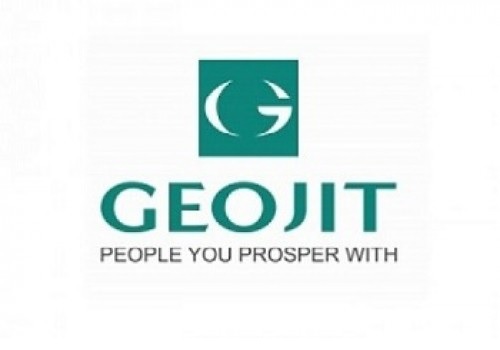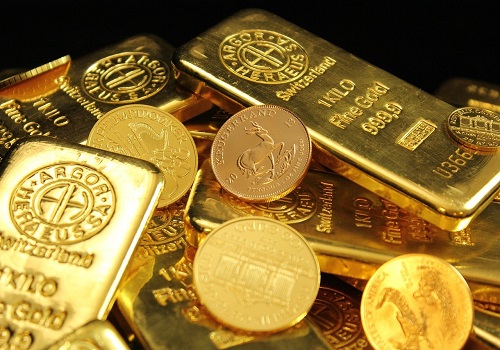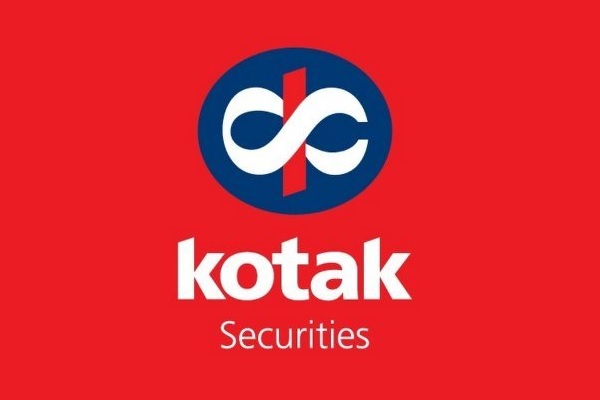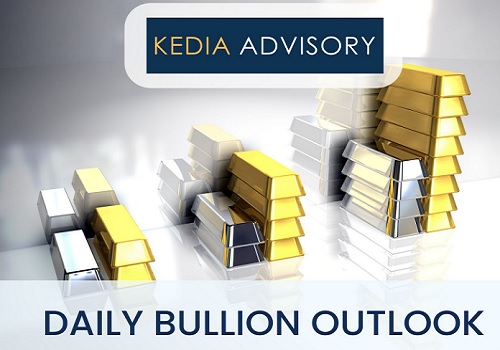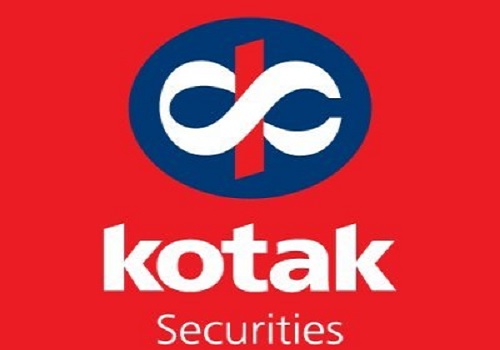Zinc trading range for the day is 267.3-271.7 - Kedia Advisory

Gold
Gold prices rose by 1.24% to ?86,113 as concerns over U.S. President Donald Trump’s tariff plans fueled safe-haven demand. Market focus is now on the U.S. Federal Reserve’s January meeting minutes, which could provide insights into future interest rate decisions. Goldman Sachs raised its 2025 gold price forecast to $3,100 per ounce from $2,890, citing structurally higher central bank demand, which is expected to contribute a 9% price increase by year-end. Meanwhile, the U.S. Producer Price Index (PPI) report eased some inflation concerns after a hotter-than-expected consumer prices report. The London Bullion Market Association (LBMA) reported that gold held in London vaults declined by 1.7% to 8,535 metric tons in January, indicating tightening supply. In India, record-high gold prices dampened retail demand, leading dealers to offer discounts of up to $26 per ounce. Gold leasing rates in India doubled in a month, reflecting supply constraints as global banks diverted gold to the U.S. In China, gold was sold at par to a discount of $18 per ounce post-Lunar New Year, while Japanese dealers offered discounts between $6 and $0.5. Technically, gold remains in fresh buying territory, with open interest rising by 5.87% to 16,640 contracts. Immediate support is at ?85,500, with further downside at ?84,880. Resistance is seen at ?86,440, and a breakout could push prices to ?86,760.
Trading Ideas:
* Gold trading range for the day is 84880-86760.
* Gold prices rose as uncertainty around U.S. President Trump's tariff plans continued to safe haven flows into bullion.
* Bullion benefits from geopolitical and economic uncertainties, as well as rising price pressures.
* Goldman Sachs raised its gold price forecast to $3,100 per ounce from $2,890 per ounce for end-2025
Silver
Silver prices climbed 1.33% to ?96,848 as ongoing global trade uncertainties bolstered safe-haven demand. US President Donald Trump's announcement of reciprocal tariffs heightened fears of a broader trade war, while geopolitical tensions, particularly concerning US-led efforts to resolve the Ukraine conflict, kept investors cautious. Additionally, silver prices have been supported by strong industrial demand, particularly from the green energy and manufacturing sectors. China’s addition of 357 gigawatts of solar and wind power in 2024 has significantly driven silver consumption. The Silver Institute projects a fifth consecutive year of market deficits in 2025, driven by strong industrial demand and retail investment. London Bullion Market Association (LBMA) data showed a sharp 8.6% decline in silver holdings in London vaults at the end of January, marking the largest monthly drop since records began in 2016. Global silver demand is expected to remain stable at 1.20 billion ounces in 2025, with industrial fabrication forecasted to grow by 3% and surpass 700 million ounces for the first time. Silver investment demand is also set to rise by 3%, while jewelry demand is anticipated to decline by 6%, mainly due to high local prices in India. Technically, the market is witnessing fresh buying, with open interest rising by 1.93% to 19,725 contracts as prices gained ?1,268. Silver has immediate support at ?96,025, with further downside potential toward ?95,205. On the upside, resistance is at ?97,320, and a breakout above this level could push prices to ?97,795.
Trading Ideas:
* Silver trading range for the day is 95205-97795.
* Silver prices rose as global trade uncertainties continued to drive safe-haven demand for precious metals.
* US President Trump recently announced plans to impose reciprocal tariffs on countries taxing US imports, raising worries over a wider trade war.
* The Silver Institute forecast a fifth consecutive year of significant market deficits in 2025
Crude oil
Crude oil prices gained 0.56% to settle at ?6,233 as supply concerns emerged following a drone strike on a Russian pumping station, disrupting Kazakhstan’s crude exports and potentially cutting pipeline flows by 30%. OPEC+ is reportedly considering delaying its planned production increase for April, marking the fourth postponement since 2022. Kazakhstan has committed to further production cuts to offset its January overproduction, reinforcing supply discipline within the cartel. Meanwhile, U.S. crude oil imports from Mexico hit a record low of 149,000 barrels per day (bpd), down by 372,000 bpd from the previous week, as per the U.S. Energy Information Administration (EIA). The EIA reported a crude stock build of 4.1 million barrels to 427.9 million barrels, exceeding market expectations of a 3 million-barrel rise. Stocks at Cushing, Oklahoma, rose by 872,000 barrels, while refinery utilization increased by 0.5 percentage points. U.S. gasoline inventories fell by 3 million barrels to 248.1 million barrels, countering expectations of a 1.4 million-barrel build. Distillate stockpiles, which include diesel and heating oil, rose marginally by 0.1 million barrels against expectations of a 1.5 million-barrel drop. The EIA’s Short-Term Energy Outlook projected U.S. crude production to reach 13.59 million bpd in 2025, surpassing prior estimates of 13.55 million bpd. Technically, crude oil is under short covering, with open interest dropping by 31.47% to 7,253 contracts. Immediate support lies at ?6,180, with further downside at ?6,127. Resistance is seen at ?6,279, and a breakout could push prices towards ?6,325.
Trading Ideas:
* Crudeoil trading range for the day is 6127-6325.
* Crude oil gains as crude exports from Kazakhstan were disrupted after a drone strike hit a Russian pumping station.
* OPEC+ is reportedly considering delaying its planned production increases set for April.
* U.S. oil production is poised to set a larger record this year than prior estimates - EIA
Natural gas
Natural gas prices surged 8.55% to settle at ?339, driven by increased LNG export flows, a drop in daily output, and forecasts for colder weather boosting heating demand. U.S. gas production in the Lower 48 states averaged 105.6 billion cubic feet per day (bcfd) in February, up from 102.7 bcfd in January. However, extreme cold led to freeze-offs in some regions, reducing daily output by 3.2 bcfd over the past eight days to a three-week low of 103.6 bcfd. Meteorologists expect colder-than-normal weather through February 23, potentially sustaining strong demand. U.S. utilities withdrew 100 billion cubic feet (bcf) of gas from storage for the week ending February 7, exceeding market expectations of 92 bcf. This lowered total inventories to 2,297 bcf, 9.7% below last year’s levels and 2.8% under the five-year average. The Midwest (-46 bcf) and East (-39 bcf) saw the sharpest stockpile declines due to extreme heating demand. The EIA’s Short-Term Energy Outlook forecasts record natural gas output and demand in 2025, with dry gas production rising to 104.6 bcfd and domestic consumption reaching 90.7 bcfd. U.S. LNG exports are projected to climb to 14.0 bcfd in 2025 and 16.2 bcfd in 2026, further tightening supply. Technically, the market is witnessing fresh buying as open interest surged by 61.4% to 20,888 contracts. Natural gas finds support at ?318.8, with a break lower potentially testing ?298.7. Resistance is seen at ?349.7, and a move above this level could push prices towards ?360.5.
Trading Ideas:
* Naturalgas trading range for the day is 298.7-360.5.
* Natural gas prices gained on rising flows to LNG export plants, a drop in daily output and forecasts for colder weather.
* EIA projected dry gas production will rise from 103.1 bcfd in 2024 to 104.6 bcfd in 2025
* EIA projected domestic gas consumption would rise from a record 90.2 bcfd in 2024 to 90.7 bcfd in 2025.
Copper
Copper prices edged up 0.41% to settle at ?868.35 as traders assessed the impact of U.S. President Donald Trump’s proposed reciprocal tariffs, which are not immediately enforceable. Market sentiment was also influenced by Chinese President Xi Jinping’s pledge to support the private sector, encouraging business confidence in China’s economic model. The National Development and Reform Commission (NDRC) announced plans to ease constraints on private enterprises, reinforcing government support. Meanwhile, the People’s Bank of China (PBOC) reaffirmed its commitment to maintaining yuan stability while allowing market forces to influence exchange rates. Investors now await the upcoming Loan Prime Rate (LPR) announcement to gauge the central bank's policy stance. On the supply front, the premium between cash LME copper and three-month futures surged to $249 per ton before flipping to a $50 discount. The COMEX copper premium over LME widened to $1,002 per ton from $913. Peru’s copper output declined by 0.7% to 2.73 million metric tons in 2024, marking the first drop after four years of post-pandemic recovery. The country’s production is expected to stabilize at 2.8 million metric tons in 2024-25 due to declining ore grades. The global refined copper market recorded a 131,000-ton deficit in November, up from 30,000 tons in October, as consumption outpaced supply. Technically, copper is witnessing short covering as open interest dropped by 11.69% to 4,184 contracts. Support is seen at ?862.9, with a break below potentially testing ?857.5, while resistance is at ?871.3, and a move above could push prices to ?874.3.
Trading Ideas:
* Copper trading range for the day is 857.5-874.3.
* Copper gains after U.S. President announced plans for reciprocal tariffs, which will not be immediately implemented.
* Traders weighed the impact of President Xi Jinping’s pledge to support the private sector during a private meeting with top business figures.
* PBOC Governor Pan reiterated that the central bank will let the market play a key role in setting the yuan’s exchange rate
Zinc
Zinc prices rose 0.69% to settle at ?270.1 as traders balanced concerns over U.S. import tariff plans with optimism over China’s economic stimulus measures. Despite a 70.5% surge in zinc inventories at Shanghai Futures Exchange-monitored warehouses, improved demand prospects in China and a weaker dollar supported prices. The People's Bank of China (PBoC) reiterated its commitment to adjusting monetary policy to counter economic headwinds, signaling potential rate cuts and liquidity measures to boost domestic demand. In a move to support economic recovery, China’s new bank loans hit a record high in January, raising expectations of further stimulus. On the supply front, global mined zinc production declined for the third consecutive year in 2024, with refined zinc output in China dropping 7% due to lower processing rates. The Red Dog Mine in Alaska, which accounts for 10% of global output, is expected to slow production in 2025 as ore reserves deplete. Meanwhile, the global zinc market deficit narrowed to 52,900 metric tons in November, down from 65,400 tons in October, according to ILZSG data. A 6% year-on-year decline in cumulative Chinese refined zinc production is expected for January-February 2025, driven by holiday shutdowns, maintenance activities, and output cuts in key regions. Technically, the market is witnessing short covering as open interest declined by 2.29% to 2,302 contracts. Zinc finds support at ?268.8, with a break below potentially testing ?267.3. On the upside, resistance is at ?271, with further gains likely towards ?271.7 if momentum sustains.
Trading Ideas:
* Zinc trading range for the day is 267.3-271.7.
* Zinc gains after U.S. President Trump announced plans for reciprocal tariffs, which will not be immediately implemented.
* Zinc inventories in warehouses monitored by the Shanghai Futures Exchange rose 70.5% from last Friday, the exchange said.
* PBOC said in its fourth-quarter monetary policy implementation report that it would adjust policy.
Aluminium
Aluminium prices gained 1.37% to settle at ?261.95, supported by supply constraints and expectations that U.S. President Donald Trump’s proposed global tariffs would not take effect until April. However, gains were capped due to post-holiday inventory accumulation, with stockpiles expected to rise sharply this week. Aluminium inventories at Shanghai Futures Exchange warehouses dropped 4.9% from last Friday, offering some price support. Meanwhile, Japan’s bargaining power in quarterly aluminium premium negotiations weakened due to slow imports and reduced overseas smelter holdings. China’s aluminium production hit a record 44 million tons in 2024, nearing the 45-million-ton cap set by the government to limit oversupply and reduce carbon emissions. The country’s aluminium exports rose 17% year-on-year to 5.5 million tons in the first ten months of 2024. December’s output increased 4.2% YoY to 3.77 million metric tons, driven by new production in Xinjiang. However, daily aluminium output declined 1.7% from November. Profitability in the sector deteriorated due to rising costs, with Chinese producers incurring average losses of 687 yuan per ton, marking the first industry-wide losses in three years. Technically, the market is witnessing short covering as open interest declined by 3.4% to 2,275 contracts. Aluminium finds support at ?259.2, with a break below potentially testing ?256.3. On the upside, resistance is seen at ?263.8, and a move above this level could push prices toward ?265.5.
Trading Ideas:
* Aluminium trading range for the day is 256.3-265.5.
* Aluminium prices gains helped by supply tightness
* Aluminium inventories in warehouses monitored by the Shanghai Futures Exchange dropped -4.9%
* Japan aluminium premiums likely to stay high, adding to inflation
Cottoncandy
Cottoncandy prices increased by 0.41% to settle at ?54,370, supported by expectations of significant procurement by the Cotton Corporation of India (CCI), which is likely to buy over 100 lakh bales at the Minimum Support Price (MSP) this season. The Cotton Association of India (CAI) estimates a decline in India’s cotton output for the 2024-25 season to 301.75 lakh bales from 327.45 lakh bales in 2023-24 due to lower yields in Gujarat, Punjab, and Haryana. Despite the lower output, the quality of cotton remains strong. As of January 2025, total cotton supply is projected at 234.26 lakh bales, including 188.07 lakh bales from fresh pressings, 16 lakh bales from imports, and 30.19 lakh bales as opening stock. India's domestic consumption is retained at 315 lakh bales, while exports are projected to decline to 17 lakh bales from 28.36 lakh bales in 2023-24. Brazil's cotton production for 2024-25 is expected to rise by 1.6% to 3.76 million tons, with a 4.8% increase in the planting area, reflecting strong supply. The U.S. balance sheet shows minor changes, with domestic mill use reduced by 100,000 bales, while global cotton consumption sees marginal increases, driven by higher demand in Bangladesh, Pakistan, and Vietnam. Technically, the market is witnessing short covering, with open interest dropping by 1.94% to 253 contracts. Cottoncandy finds support at ?54,260, with a break below potentially testing ?54,160. On the upside, resistance is seen at ?54,480, and a move above this level could push prices toward ?54,600.
Trading Ideas:
* Cottoncandy trading range for the day is 54160-54600.
* Cotton gains as CCI is likely to buy more than 100 lakh bales of cotton at MSP during the current cotton year.
* CAI said the overall cotton output is estimated to dip to 301.75 lakh bales due to lower yield in Gujarat and the northern region.
* Brazil’s 2024-25 cotton production is projected to be 1.6 per cent higher.
* In Rajkot, a major spot market, the price ended at 25652 Rupees dropped by 0 percent.
Turmeric
Turmeric prices surged by 2.63% to settle at 12,966 as concerns over lower crop yields supported the market. Reports suggest that the new crop yield may decline by 10-15%, particularly in the Nanded region, where small rhizomes and crop rots have been observed. However, the full extent of the yield loss will be confirmed once harvesting picks up in major producing regions. Despite these supply concerns, the upside remains limited due to weak demand and a marginal rise in arrivals. With the bulk of the harvest expected in the coming month, prices may face pressure as supply increases. Arrivals in the spot market rose significantly to 13,190 bags from 6,780 bags in the previous session, with higher inflows in Nizamabad and Hingoli. Turmeric exports from April to November 2024 increased by 9.80% to 121,601.21 tonnes compared to the same period in 2023. However, November exports declined by 20.18% month-on-month to 12,721.25 tonnes. Compared to November 2023, exports showed a sharp rise of 48.22%. Meanwhile, turmeric imports rose significantly by 101.80% during the same period, totaling 18,937.95 tonnes. However, November imports declined by 34.84% from October and were 2.65% lower than November 2023. Technically, the market is under short covering, with open interest declining by 0.77% to 11,615 contracts while prices increased by 332. Turmeric finds support at 12,498, and a break below may push prices to 12,030. Resistance is seen at 13,236, and a breakout above this level could lead to 13,506.
Trading Ideas:
* Turmeric trading range for the day is 12030-13506.
* Turmeric gains as new crop yields are expected to be 10-15% lower this year.
* Support also seen amid concerns over slow growth of rhizomes and low yield estimates persist.
* Farmers have indicated that the yield may be lower than expected.
* In Nizamabad, a major spot market, the price ended at 12948.9 Rupees dropped by -0.36 percent.
Jeera
Jeera prices fell by 1.31% to settle at 21,520 as weak demand and sufficient stock availability weighed on the market. The start of the new crop in Gujarat has been delayed by about a month due to unfavorable weather, impacting the supply timeline. Despite this, an estimated 20 lakh bags of jeera remain with farmers, with only 3-4 lakh bags expected to be traded by the end of the season, leaving a significant carry-forward stock of 16 lakh bags. The current production levels are expected to match last year’s figures, supported by better sowing conditions. India’s cumin production for 2023-24 rose to 8.6 lakh tonnes from an expanded sowing area of 11.87 lakh hectares, compared to the previous year's 5.77 lakh tonnes from 9.37 lakh hectares. Indian cumin remains the cheapest in the global market at $3,050 per tonne, with Chinese cumin priced $200-$250 higher. As a result, buyers, including China, are turning to India for imports, providing some support to prices. Additionally, tensions in the Middle East have boosted exports from Gujarat. Jeera exports surged by 74.04% to 1,47,006.20 tonnes between April and November 2024 compared to 84,467.16 tonnes in the previous year. However, November exports fell 28.92% month-on-month but remained 42.67% higher year-on-year. Technically, the market is under fresh selling pressure as open interest increased by 4.4% to 2,703 contracts while prices dropped 285. Jeera has support at 21,010, and a break below could test 20,490. Resistance is seen at 22,360, and a breakout above this level could push prices to 23,190.
Trading Ideas:
* Jeera trading range for the day is 20490-23190.
* Jeera dropped as demand is low and the current export business is being met from the available stock.
* The start of the new crop of cumin in Gujarat has also been delayed by about a month.
* Due to unfavourable weather, this time the start of sowing of cumin in Gujarat and Rajasthan was delayed by about a month.
* In Unjha, a major spot market, the price ended at 21949.75 Rupees gained by 0.46 percent.
Views express by all participants are for information & academic purpose only. Kindly read disclaimer before referring below views








